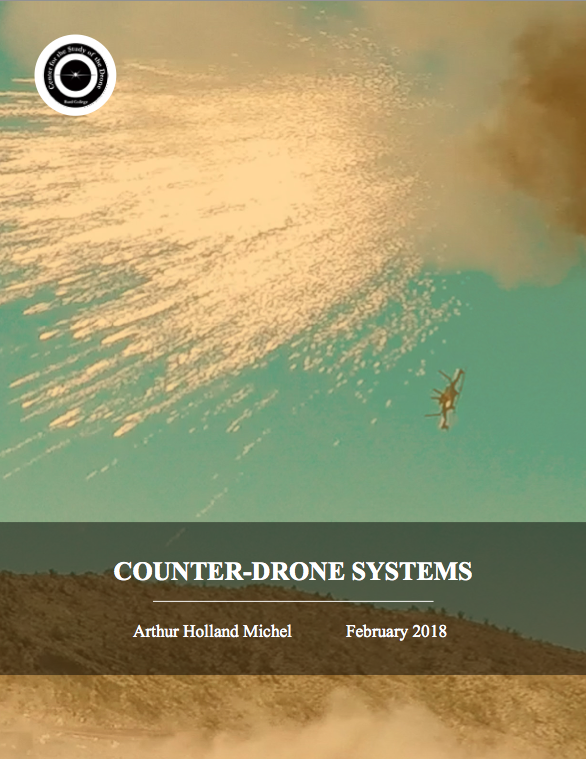Counter-drone technology, also known as counter-UAS, C-UAS, or counter-UAV technology, refers to systems that are used to detect and/or intercept unmanned aircraft. As concerns grow around the potential security threats drones may pose to both civilian and military entities, a new market for counter-drone technology is rapidly emerging. To date, we have found at least 235 counter-drone products either on the market or under active development. “Counter-Drone Systems,” a new report published by the Center for the Study of the Drone, provides background on the growing demand for C-UAS technology, describes how the technology works, presents our database of known C-UAS systems from around the globe, and explains some of the challenges surrounding counter-drone technology use.
Key Takeaways:
- The C-UAS industry has grown exponentially in recent years. We have identified over 230 C-UAS products produced by 155 manufacturers in 33 countries;
- The most popular drone detection techniques are radar, RF detection, EO, and IR. The most popular interdiction technique is jamming;
- C-UAS technology poses a wide range of practical, legal, and policy challenges in all operating environments;
- A lack of common standards in the C-UAS industry means that there is a wide variance in the effectiveness and reliability of systems.
Read the full report here:


In your report ‘Counter Drone Systems’ discussion of legality of interdiction, you note FAA has designated UAS as aircraft; however, this designation was established by congress in the 2012 FAA Modernization and Reform Act, PL 112-95.
In addition to the Wiretap Act (18 USC §§ 2510–2522), Computer Fraud and Abuse Act (18 USC § 1030), and Aircraft Sabotage Act (18 USC § 32), the Pen/Trap Statute (18 USC §§ 3121–3127) also applies. There are also FCC and NTIA issues with spectrum that apply with C-UAS technology.
The 133 military installations around the country you note having authority to shoot down UAS is not correct as the FY2017 and FY2018 NDAA define the limited scope of authority DOD has to interdict UAS.
Great report! This document is a really helpful primer for anyone interested legal issues related to drone use, as well as the myriad of players and solutions in the space.